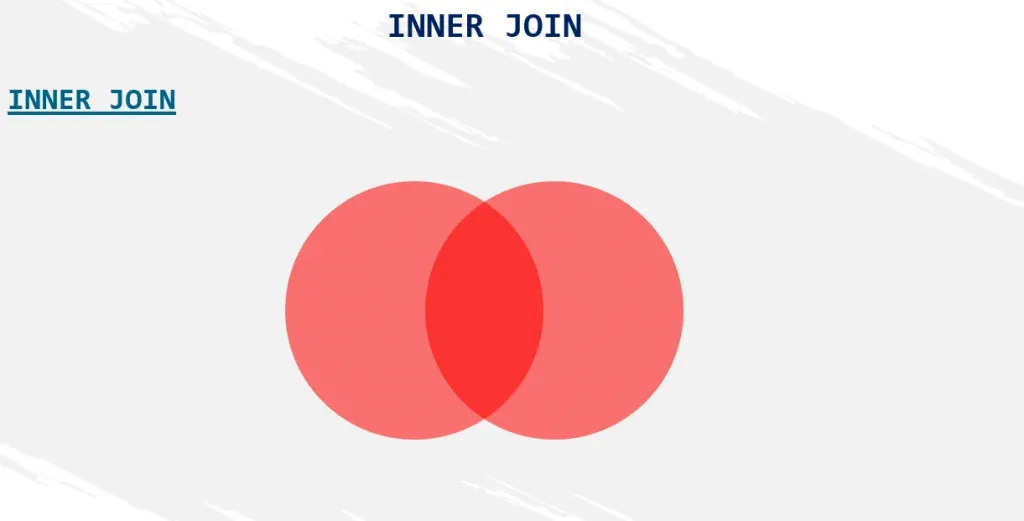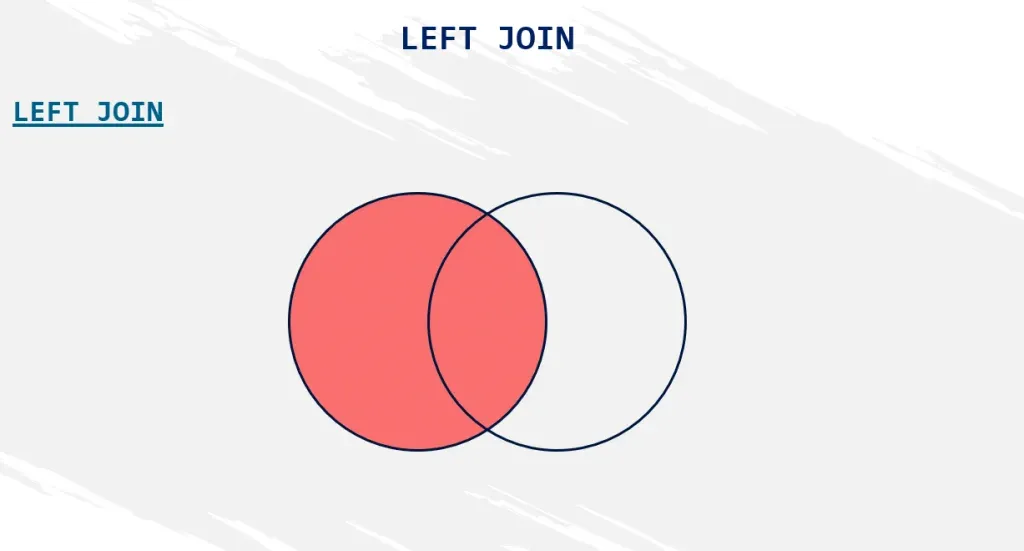Data architect interview questions don’t only revolve around role-specific topics like data modeling. Yes, ETL architect interview questions will undoubtedly be asked. And data warehouse architect interview questions (and solutions) will be on the list. But interviewers will also challenge you with brainteasers and behavioral and situational questions. So, how do you prepare for a successful data architect interview?
This article addresses everything you need to know about data architect interview preparation, including:
- Skills you need to become a data architect
- Real-life data architect interview questions and answers you should know
- The interview process at three top-tier companies
- How to recover from three common job interview mistakes
Want to Practice These Interview Questions Live?
Try our AI-powered interview simulator! Customize your interview experience by selecting:
- Your target role
- Dream company
- Interview type (HR or Technical)
- Your background and experience level
Get instant feedback and a detailed score report after each practice session. Take your interview prep to the next level!
Top 5 Skills Needed to Become a Data Architect
The essential competencies every data architect must demonstrate include the following:
- Strong data modeling skills
- Database architecture and data warehousing experience
- Data governance know-how
- Experience with Python or R and SQL
- Good command of data visualization tools like Tableau
Interview Questions for Data Architects
General Data Architect Interview Questions
The more general part of the interview is focused on more than just your resume. It could also include questions regarding the projects you’ve worked on and how you manage your time and priorities.
- Have you ever taken part in improving a company’s existing data architecture? Please describe your involvement in the process and the overall impact the changes had on the company.
How to Answer
Routine tasks and maintenance are essential to a data architect’s job. But as a data architect, you should be proactive and strive to improve the company’s data processes and structures. Employers want to hire data architects with a critical mindset who are willing to take part in increasing the efficiency and productivity of current environments. So, do your best to show the interviewer you don’t become preoccupied with routine tasks and don’t lose sight of the bigger picture that big data architect interview questions may infer.
Answer Example
In my work experience, marrying external data with internal data in corporate systems can pose various threats to data integrity. That’s why I launched a project establishing a step-by-step screening process for our third-party purchased data. I also improved the relationship with our data supplier, who, in turn, agreed to run a few checks on their data before sending it to us. This initiative positively impacted the company’s data reliability and decreased database errors by 29% within one year.
- As a data architect, have you faced any challenges related to the company’s data security? How did you ensure the integrity of the data was not compromised?
How to Answer
Data security is a top priority for every company. That’s why hiring managers would like to learn more about your experience with data security issues. When answering this question, emphasize that data security is essential to your job—although your background isn’t focused in that field.
Answer Example
When working in a team, it’s sometimes difficult to agree on what could pose a security risk. I remember when some of my colleagues wanted to change the established process for uploading franchise data to our system. This prompted the team members to modify their plan to strengthen data security measures. I was sure these changes could result in security risks. So, to validate my point, I calculated the possible financial loss to the company in case security was compromised.
- As a data architect, you should be current with the latest technologies and developments. How do you keep yourself informed about the new trends in data architecture?
How to Answer
When working in a technical role, it’s common to become absorbed in the company’s current processes and miss out on the latest industry developments. So, try to list news resources you’re subscribed to and mention some conferences, training, or industry events you attend when you can. Hiring managers will appreciate your willingness to educate yourself despite your busy schedule.
Answer Example
I stay informed about industry trends and technology advancements, which helps me improve my work or inspires me to develop ideas to benefit the company’s status quo. I subscribe to certain newsfeeds like InformationWeek and TechNewsWorld. I also attend two to three conferences a year, where I network with other professionals in the field. And whenever my schedule allows, I participate in specialized training and seminars.
Technical Data Architect Interview Questions
The technical questions in a data architect interview focus on your work with specific programming languages, tools, and technologies and your ability to use them to fulfill project goals or solve unforeseen issues.
- Many companies use data from internal and external sources. Have you faced any problems while integrating a new external data source into the existing company’s infrastructure? How did you solve these issues?
How to Answer
External data often comes from sources using different data formats and systems, which may cause issues when importing this data into the company’s data systems. As a data architect, you must ensure the data format is readable and ready to use before storing it in the data warehouse. With this question, hiring managers want to assess your problem-solving skills when faced with external data integration challenges. So, try to provide an answer demonstrating how you address such issues.
Answer Example
In my work experience, the cause of external data integration issues typically comes from a different system that creates the data in an incompatible format. Unfortunately, all companies cannot use the same systems. So, I solved this problem by creating and running a script before uploading the data to my company’s warehouse tables. The script changed the external data format and ran tests to ensure the new format was compatible with our systems.
- Have you worked with open-source technology? Tell us about issues you’ve come across when using it.
How to Answer
When an interviewer asks such a specific question, the company is either considering using open-source technology in the future or is already utilizing it. If you have relevant experience, give some examples. And be sure to highlight your ability to modify the open-source programming code. If you haven’t encountered problems using it, note possible disadvantages to open-source technology.
Answer Example
I’ve worked with Hadoop and MySQL without significant problems. Nevertheless, I realize that using open-source databases or software utilities has drawbacks. For example, you need to rely on advice from user forums because there’s no proper customer support to address your issue. And developers don’t spend much time on their user interface, so you may lack the necessary resources to get started.
- State and describe the different types of SQL Joins.
How to Answer
The basic types of SQL JOINS include INNER, LEFT, and RIGHT. (In SQL theory, one more JOIN type rarely used is FULL.) The easiest and most intuitive way to explain the difference between the INNER, LEFT, and RIGHT JOINS is by using a Venn diagram showing all possible logical relations between datasets.
The SQL INNER JOIN lets us select all records from Table A and Table B as long as there is a match between the columns.

The SQL LEFT JOIN returns all records from the left table plus the matched values from the right table. If there are no matches, the LEFT JOIN returns all rows from the left table and a NULL value from the right.

The functionality of the SQL RIGHT JOINS is identical to LEFT JOINS but in the opposite direction of the operation.
Author’s Note: If you’re eager to learn more about SQL JOINS, check out our dedicated tutorials:
- What is a primary key and a foreign key?
How to Answer
A primary key is a column (or set of columns) whose value exists and is unique for every record in a table. It’s important to know that each table can have one (and only one) primary key.
You can think of a primary key as the field (or group of fields) that uniquely identifies the content of a table. For this reason, the primary keys are also known as the unique identifiers of a table.
Another vital feature of primary keys is they cannot contain null values. For example, a value must always be inserted in the rows under the column in a single-column primary key. You cannot leave it blank.
Not all tables you work with will have a primary key—although almost all tables in any database will have a single-column or a multi-column primary key.
A foreign key is a column (or set of columns) referencing another table’s column—often the primary key. Foreign keys can be known as identifiers, too, but they identify the relationships between tables, not the tables themselves.
In the relational schemas form of representation, relations between tables are expressed in the following way:
The column name that designates the logical match is a foreign key in one table and connected with a corresponding column from another. The relationship often goes from a foreign key to a primary key. But in more advanced circumstances, this will be different. To catch the relations on which a database is built, we should always look for the foreign keys because they show where the relations are.
Author’s Note: Check out our tutorials on SQL Primary Key and SQL Foreign Key for a more in-depth explanation.
- How many types of data structures does R have?
How to Answer
This question is important because virtually everything you do in R involves data in some shape or form. The most used data structures in R include the following:
- Vectors (atomic and lists)
- Matrixes
- Data frames
- Factors
- What modeling tools have you used in your work? Which do you consider efficient or powerful?
How to Answer
Even if data modeling isn’t one of your primary responsibilities, your role as a data architect requires an in-depth understanding of data modeling. If you lack the experience, demonstrate that you’re well informed on the topic and note the data modeling tools you find most useful. The interviewer will appreciate that you’re at least familiar with the subject.
Answer Example
I’ve mainly used Oracle SQL Developer Data Modeler and PowerDesigner. The Oracle Data Modeler has been ideal for my needs with its dimensional modeling and integrated source code control that supports collaborative development. But PowerDesigner also boasts excellent technology-centric metadata management capabilities for data architects and business-centric techniques for non-technical coworkers. Overall, I think both tools are worth a try, depending on the company’s needs.
- What’s your experience with batch and real-time data processing?
How to Answer
These data processing methods can be applied depending on the business case. If you have experience with only one, provide examples of situations where the other processing method would be a better fit. This will indicate that you have a basic understanding of batch and real-time data processing.
Answer Example
I’m familiar with both types of data processing. But I’ve had more exposure to batch processing because one of my responsibilities was to write programs that captured, processed, and produced output for the company’s billing department. I’ve had less experience with real-time data processing. But I know our company uses it to immediately act on the data collected from our stores’ POS systems.
- As a data architect, what metrics have you created or used to measure the quality of new and existing data?
How to Answer
Establishing processes to ensure data quality is vital to a company’s infrastructure. With this question, the hiring manager wants to assess your relevant experience. Ensure you highlight the dimensions you’ve monitored to validate the data quality.
Answer Example
I’ve always ensured data quality in my job as a data architect. My team and I monitored specific dimensions to validate the data quality—including completeness, uniqueness, timeliness, validity, accuracy, and consistency. Observing these dimensions helped us detect inconsistencies that could negatively affect the accuracy of data analysis.
Behavioral Data Architect Interview Questions
Data architects often work with co-workers from various departments, backgrounds, and responsibilities. You should be prepared to answer behavioral questions about your work style and ability to manage conflict in cross-functional teams.
- What challenges have you faced working with colleagues with no technical background? How did you address and overcome these challenges?
How to Answer
Data architects often work with other departments within a company, which involves collaborating with those who lack technical background and understanding of the data processes. The interviewer would like to assess your communication style and ability to reach common ground with your co-workers despite your differences. Describe a specific situation to illustrate the issues you encountered and how you solved them.
Answer Example
A good data architect should understand the needs of the different departments across the company. I’ve had to work with people who don’t fully understand my role and responsibilities. Some of my co-workers would propose requests I had to decline due to our data architecture limitations, which led to inevitable tensions. Overcoming such challenges takes time. Gradually, we learned more about each other’s work which helped us brainstorm possible solutions. All in all, taking the extra step to educate myself and others has made all the difference.
- How would you describe your work style?
How to Answer
This question is not about your personality but how you approach your work to accomplish assignments. Talk about managing tasks and projects and communicating with co-workers and clients. Your work style might be collaborative, well-structured, speedy, flexible, or independent. No matter which words you choose, keep the job description in mind and how your work style fits the profile.
Answer Example
I’d describe my work style as collaborative. I like to work on full-team participation projects and co-create with my teammates. I always consult with my team if I need clarification on my direction. This way, we can work toward consensus and align our ideas.
- How would you resolve a conflict within your team?
How to Answer
The hiring manager wants to hear about your ability to professionally solve team issues when they occur. Think of an example where you needed to use your communication skills to handle a conflict with your co-workers or when you managed to help two of your teammates find common ground as a mediator.
Answer Example
I have excellent conflict management skills. As a data architect in a large company, I’ve worked in a high-stress environment, which has sometimes caused tension among team members. I try to deal with it openly when this escalates to a conflict. Typically, I’d organize a group meeting where everyone could voice their concerns to sort out the issue and move on with our work.
- What is the most critical factor for you when taking a job?
How to Answer
Many factors may influence a decision to take on a new job, including the following:
- Career growth opportunity
- Compensation
- Work/life balance
- Travel required for the role
- Medical and dental benefits
- Perks like a gym membership, onsite kids center, and spending account
- Paid vacation
- The company’s location
- The company’s reputation and culture
Share with the interviewer which factors are most important when considering starting a new job. If you’re unsure about the details regarding this position, this is an excellent time to get informed.
Answer Example
As a data architect, my most critical factors include the company’s industry and workplace culture. The first predefines the projects I’ll be involved in. The second determines if the work environment will be positive and teamwork-oriented—just as important as compensation and benefits.
- Are you also interviewing with any of our close competitors?
How to Answer
If the interviewer wants to know if you’re also applying for a job at a competitor’s company, you can give a direct answer. But you should refrain from giving away the company’s name or sharing too many details. Let the interviewer know you aren’t putting all your eggs in one basket. At the same time, leave the impression that you’re serious regarding the companies you apply to.
Answer Example
Your company is my first choice, and I’m happy that we’ve reached the final step. I shouldn’t disclose the names of the competitors I’m interviewing with. But I can say that I’m in the mid-interview stages with three other companies.
- How would you assess your performance with these data architect interview questions?
How to Answer
This is a question you should answer openly. Generally, you would know if you performed well or if your interview was a disaster. If you address your performance issues, you might get an opportunity to answer additional questions that could help your standing.
Answer Example
If you think that your performance in the interview has been going well:
I think the interview has been quite successful, and I’m satisfied with my performance. Is there anything you’d like me to clarify from our talk?
If you think that your performance in the interview has been unsatisfactory:
I don’t think I managed to portray myself in the best light possible in this interview. But I always try to do my best. So, if there’s anything I could further clarify for you, I’d be more than happy to do so.
Data Architect Interview Questions: Brainteasers
Brainteasers help the interviewer assess your logical thinking and ability to develop a creative solution for an issue.
- What is the sum of the numbers from 1 to 100?
There’s a bit of history behind this question. The math teacher of young Karl Gauss (the famous mathematician) asked his class to find the sum of all natural numbers from 1 to 100. He expected the task to last at least half an hour but was shocked when Gauss gave him the number within seconds. Note below how this question is solved:
There are precisely 50 pairs of numbers from 1 to 100, totaling 101.
1 + 100 = 101, 2 + 99 = 101, 3 + 98 =101, etc.
50 x 101 = 5050
This task will work for any number series, provided they are evenly spaced. You need to find the sum of the first and the last number and then multiply by the number of pairs.
- You’re given two empty containers: one can hold 5 gallons of water and the other 7. How do you use them to measure 4 gallons of water?
This is what you'll be expected to explain:
- Fill the 7-gallon container with water.
- Use the water in the 7-gallon container to fill the 5-gallon container, leaving 2 gallons of water in the 7-gallon container.
- Pour out the water from the 5-gallon container until empty, and then fill it with the 2 gallons of water from the 7-gallon container. (You will now have 2 gallons of water in the 5-gallon container.)
- Refill the 7-gallon container with water and then start pouring water from it into the 5-gallon container.
- Given that the 5-gallon container already has 2 gallons of water, you can add only 3—meaning that 4 gallons would remain in the 7-gallon container.
Data Architect Interview Questions: Guesstimates
Guestimates are not typically a part of each data architect interview. But if the interviewer decides to throw you a curve ball, you should be prepared. Here’s one:
How many flat-screen TVs have been sold in Australia in the past 12 months?
The population of Australia is approximately 24 million. Assume that the average household comprises two people. (Many families have three or four individuals, balanced by those living alone.) So, the number of homes is 12 million, provided that all people have a home. Then we need to find out how many TVs in these 12 million homes will need to be replaced with new ones.
Let’s assume that people must replace their old TVs with new ones every six years and that every home has 1.5 TVs. Nowadays, it’s reasonable to expect that all new TVs purchased have a flat screen. Therefore, the number of flat-screen TVs that are purchased in Australia in one year is equal to the following:
1/6 of the homes buy a new TV this year—i.e., 12 million houses with 1.5 TVs per home = 3 million flat-screen TVs.
What’s the Data Architect Interview Process Like?
What should you expect from a data architect interview process—technical phone screens, onsite interviews with team members, or a lunch meeting with your potential manager?
All of the above. But interview processes vary depending on the company’s policy and recruitment approach.
Consider the following aspects of the data architect job interview with three top-notch companies: Netflix, Microsoft, and Apple. These brief overviews will show you what happens behind closed doors.
Netflix
Typically, Netflix’s process starts with two phone interviews with more general background and professional experience questions—one with a recruiter and another with the hiring manager. Two onsite interviews follow the phone screens—the first with three or four individuals from the data architect team. So, you can expect plenty of questions about database systems, database architect interview questions regarding software design patterns, virtual warehousing, and some programming questions. You’ll also be asked to analyze a hypothetical problem and list various solutions during the architect interview questions and answers session. In the second interview, you’ll meet higher-level executives, which means some behavioral and situational questions will come your way.
Microsoft
The data architect interview process usually starts with a phone interview covering your expertise, previous job experience, and plans. The interviewer will probably ask you about the Microsoft technologies you’ve used to build solutions and the challenges you’ve encountered while implementing them.
The phone screen is followed by four to five onsite interviews, often with two teams— half focused on data architecture interview questions. Those include scenario-based data architecture questions where you should list the pros and cons of all possibilities and what decision you’d make based on the company’s needs.
The interviewers will also test your coding skills. As in other corporations, you only reach the hiring manager if you’ve passed the data architect interviews with the teams. Once the hiring manager has decided, you should receive timely feedback. But after a week, if you’re still waiting for an answer from HR, there’s no harm in sending a friendly reminder.
Apple
The Apple data architect interview is relatively standard. You’ll first have a phone screen with a recruiter, followed by a few technical data architect phone interviews with team members.
If you pass these interviews, the recruiter will give you an overview of the process before the onsite data architect interviews. You’ll have six to eight interviews with the data architect team members and senior employees the team works with. There are one-on-one and two-on-one interviews, plus a lunch interview with your potential manager. Like other companies, interviewers’ questions are centered around different areas, and the interviewers refrain from sharing their feedback during the process. But prepare for some data mart, dimension tables, and star and snowflake schema questions.
Once that stage is over, your interviewers will compare notes. Then—only if they’re sure you’re a good prospect for the job—you’ll have interviews with the director and the VP of the company, who has the final say. You’ll typically hear from a recruiter within a few days. But if it takes longer, you can send a kind request for updates. And remember, Apple employees are huge Apple fans. So, even if being a Mac user isn’t a prerequisite, you should demonstrate some knowledge (and enthusiasm) about its products.
Three Common Job Interview Mistakes and How to Recover from Them
Once you start attending data architecture interviews, you’ll stumble upon a challenging question or a quirky comment. (Interviewers love throwing these to test a candidate’s reaction.) So how do you recover from interview blunders? Note the following three common mistakes and techniques to help you take charge of the situation and stay in the interview game.
1. Complaining about Your Previous Job
Nobody wants to hear you complain about your bad experiences at your previous job—especially the hiring manager at your potential new job interview. Doing so signals to your future employer that you aren’t loyal to your company. But what if an unpleasant comment slips your tongue? In this case, admit your mistake, and apologize. For example, if you stated that your previous employer didn’t appreciate you, apologize and rephrase what you said: “What I was trying to say is that I felt I could be much more productive and contribute more to the company’s accomplishments.” This way, the interviewer will know you’ve realized your mistake and are trying to correct it.
2. Lack of Plans
Telling the interviewer you have no idea where you’ll be five years from now is likely interpreted as: “I don’t care about my future or your company.” If you make that mistake, explain: “Before setting goals, I’d like to acquire the skills necessary to help your company reach its long-term goals and stay ahead of the competition.” This will show that you’re ambitious and won’t leave the company in the next few years.
3. “I Don’t Know”
Hiring managers know that you can’t possibly have an immediate answer to all questions. Nevertheless, openly stating you don’t know an answer during the interview leaves you vulnerable. So how do you recover from that? You can say: “This is an intriguing question, and I need more time to think. May I take some time to consider it and send you an answer?” If the interviewer accepts your proposal, research the question thoroughly and ensure you deliver the answer within the agreed time frame.
Next Steps
A positive attitude is critical—especially if you’ve been unemployed for a long time. Companies want positive and competent people on their team, so find a way to keep your head up and exude confidence. You can find more data architect interview questions in our comprehensive article Data Science Interview Questions.
Do you want to take the next steps toward advancing your career?
Gain valuable knowledge with our Introduction to Data and Data Science course. We also offer a Data Scientist Career Track if you wish to turn your interest in data science into a full-fledged career.




